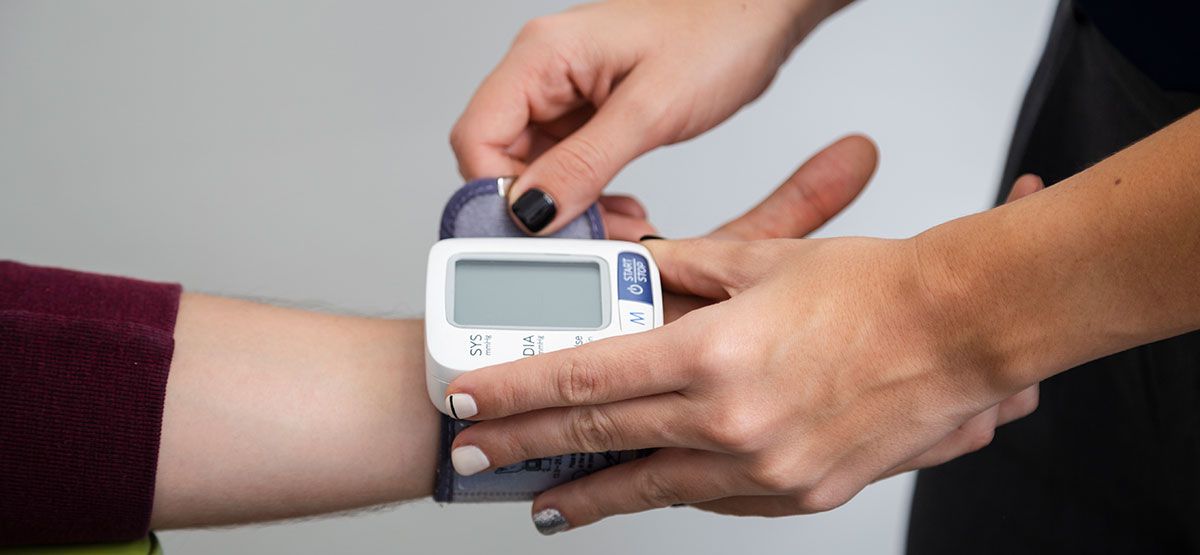
Global Implementation of Unique Device Identification Differences Across Regions
The global healthcare industry relies on a vast array of medical devices, all of which must be safe, reliable, and easy to track. The Unique Device Identification (UDI) system helps meet these needs by assigning each medical device a unique identifier, streamlining the tracking, regulatory compliance, and safety monitoring processes. However, the unique device identification number requirements differ across regions, with each regulatory body implementing its own guidelines, timelines, and databases for UDI compliance. This article delves into the global landscape of UDI requirements, highlighting the key differences across major regions like the United States, the European Union, and other countries.
What Is Unique Device Identification (UDI)?
The unique device identification system is a framework for labeling medical devices with a specific identifier, the UDI, which enables accurate tracking and data collection throughout the device’s lifecycle. A UDI consists of two parts:
- Device Identifier (DI): Identifies the specific version or model of the device.
- Production Identifier (PI): Contains variable information related to production, such as lot number, expiration date, and serial number.
This identifier, displayed on device labels in human- and machine-readable forms, allows regulatory bodies, manufacturers, and healthcare providers to track medical devices for improved patient safety, easier recalls, and more efficient inventory management.
Why Global UDI Implementation Matters
Given the international reach of many medical device companies, understanding the nuances of UDI requirements across different regions is essential. Non-compliance with UDI regulations in any given market can restrict a manufacturer’s ability to sell products in that area, which can have significant financial and operational repercussions. With each region implementing its UDI regulations in unique ways, manufacturers must adopt a tailored approach to meet compliance in each market.
UDI Implementation in Key Regions
The global adoption of the UDI system is led by major regulatory bodies, each with its own requirements and compliance timelines. Let’s explore the key differences in UDI regulations across regions.
1. United States: FDA UDI Requirements
The Food and Drug Administration (FDA) was the first major regulatory body to mandate the UDI system, introducing requirements in 2013 for medical devices sold in the United States. The FDA’s UDI rule applies to most devices and emphasizes patient safety through accurate device tracking. Key requirements include:
- Labeling Requirements: All UDI labels must contain both human-readable and machine-readable information, typically as a barcode.
- Global Unique Device Identification Database (GUDID): Manufacturers must submit UDI information to the FDA’s GUDID database, which stores critical device information accessible by healthcare providers and the public.
- Class-Based Compliance Timelines: The FDA rolled out UDI requirements in phases based on device risk class, with high-risk (Class III) devices required to comply first, followed by moderate-risk (Class II) and low-risk (Class I) devices.
The FDA’s phased approach emphasizes patient safety and helps manufacturers adapt their production and labeling systems. Non-compliance can result in penalties, market access restrictions, or delays in FDA approval.
2. European Union: MDR and EUDAMED Database
The European Union’s approach to UDI is outlined in the Medical Device Regulation (MDR), which replaced the previous Medical Device Directive (MDD) and introduced strict UDI requirements for devices marketed in the EU. The EU’s UDI framework shares some similarities with the FDA’s but has unique elements:
- Labeling and Data Submission Requirements: Like the FDA, the EU requires UDI labels to be human- and machine-readable. However, the EU mandates that UDI data be submitted to the European Database on Medical Devices (EUDAMED).
- Direct Marking Requirements: For certain reusable devices that must undergo sterilization, the EU requires direct marking of the UDI on the device itself.
- Device Classifications and Timelines: The EU’s MDR categorizes devices by risk, with higher-risk devices required to comply first. Although implementation has been delayed, compliance deadlines for MDR UDI requirements are approaching quickly, especially for Class I and II devices.
The EUDAMED database is central to the EU’s approach, allowing regulatory bodies across the EU to access accurate, updated device data. EUDAMED is not yet fully operational, but manufacturers must prepare for its eventual activation to ensure compliance.
3. Japan: UDI under PMDA Guidance
Japan, known for its rigorous medical device regulations, follows UDI requirements set by the Pharmaceuticals and Medical Devices Agency (PMDA). Japan’s UDI system, while similar in purpose to those in the U.S. and EU, has distinct features:
- Local Language Requirements: All UDI information must be displayed in Japanese, ensuring that healthcare providers can accurately read and interpret the labels.
- Japan Medical Device Nomenclature (JMDN): Japan mandates that devices include a JMDN code, a unique identifier specific to the Japanese regulatory framework, alongside the UDI.
- No Centralized Database Requirement: Unlike the FDA’s GUDID or the EU’s EUDAMED, Japan does not currently require submission of UDI data to a centralized database.
Manufacturers aiming to enter the Japanese market must prepare device labeling in Japanese and adapt to the local nomenclature requirements for successful UDI compliance.
4. China: NMPA UDI Regulations
China’s National Medical Products Administration (NMPA) has established its UDI system to improve device tracking and safety. China’s approach closely mirrors the FDA’s but has unique aspects tailored to the local market:
- China UDI Database: The NMPA requires that device information be submitted to a Chinese UDI database for regulatory oversight and tracking.
- Device Labeling in Chinese: All UDI information must be presented in Chinese, following NMPA guidelines to ensure local healthcare providers can read and verify device information.
- Phased Implementation: Similar to the FDA, China’s UDI requirements are phased in according to device risk class, prioritizing higher-risk devices for early compliance.
For manufacturers, navigating China’s regulatory landscape involves understanding local language requirements and ensuring compliance with the NMPA’s phased UDI timelines.
5. Other Regions: Australia, Brazil, and Canada
Several other countries have also begun implementing UDI frameworks, each with its own requirements:
- Australia: Australia’s Therapeutic Goods Administration (TGA) has been working to align its UDI requirements with international standards, though full implementation is still in progress.
- Brazil: The Brazilian Health Regulatory Agency (ANVISA) has signaled interest in UDI requirements, likely influenced by other major markets, though Brazil’s UDI system remains in development.
- Canada: Health Canada has been considering UDI implementation, looking to align its standards with those of the FDA and EU to facilitate market access and enhance patient safety.
As UDI requirements become standardized across these regions, global manufacturers must stay updated on changing regulations to avoid compliance issues and market entry delays.
Key Differences in Global UDI Requirements
To summarize, here are the primary differences in UDI requirements across regions:
- Labeling Language and Format
- U.S. and EU requirements are similar, using human- and machine-readable formats, while Japan and China mandate labels in local languages.
- Centralized Databases
- The U.S. (GUDID) and EU (EUDAMED) require UDI data submission to centralized databases. Japan and China have varying database requirements, with Japan not mandating a database submission.
- Direct Marking Requirements
- Direct marking on devices is required by the EU for reusable and sterilizable devices, while U.S. requirements may vary depending on device class and reusability.
- Implementation Timelines by Device Class
- Phased timelines for high-, moderate-, and low-risk devices vary across regions, requiring manufacturers to tailor compliance plans for each market.
Challenges and Solutions for Global UDI Compliance
For manufacturers, implementing UDI across multiple regions presents several challenges:
- Resource-Intensive Labeling and Translation Needs: Different language and labeling requirements necessitate significant investment in translation and labeling infrastructure.
- Varied Database Submissions: With each region’s unique database requirements, managing UDI data submissions can be complex and time-consuming.
- Ongoing Regulatory Updates: UDI regulations are evolving, and staying updated on new standards is essential for maintaining compliance.
To address these challenges, companies can:
- Invest in centralized data management systems that can be customized for regional requirements.
- Work with regulatory consultants to navigate UDI nuances across different markets.
- Use automated labeling and translation solutions to streamline UDI data preparation and ensure regulatory compliance.
Conclusion
The global implementation of unique device identification varies significantly across regions, with each regulatory body enforcing its own requirements and timelines. For medical device manufacturers, understanding and adhering to these regional UDI regulations is critical to ensure market access, enhance patient safety, and support device traceability. By developing tailored strategies for each market and investing in advanced data management systems, manufacturers can successfully navigate the complexities of global UDI compliance. Staying ahead in this dynamic regulatory landscape not only helps companies maintain compliance but also builds a reputation for quality, safety, and reliability in healthcare markets worldwide.
Get the latest updates from DDi
Explore Topics
- Automation & AI (1)
- Clinical Automation (8)
- Consumer Health (1)
- IRT & Clinical Supplies (19)
- Labeling (16)
- Regulations (20)
- Regulatory Automation (14)
- Regulatory Biopharma (2)
- Regulatory Content Management (5)
- Regulatory Information Management (11)
- UDI (11)
- Writing (9)
Recent Blogs
 What is eIFU? A Complete Guide…Regulations
What is eIFU? A Complete Guide…Regulations Understanding FDA Regulations …Regulations
Understanding FDA Regulations …Regulations EU MDR IFU Compliance: What Me…Regulations
EU MDR IFU Compliance: What Me…Regulations
Previous Post
Next Post
Related Posts
CONNECT WITH US

Let's talk about how DDi can help you

